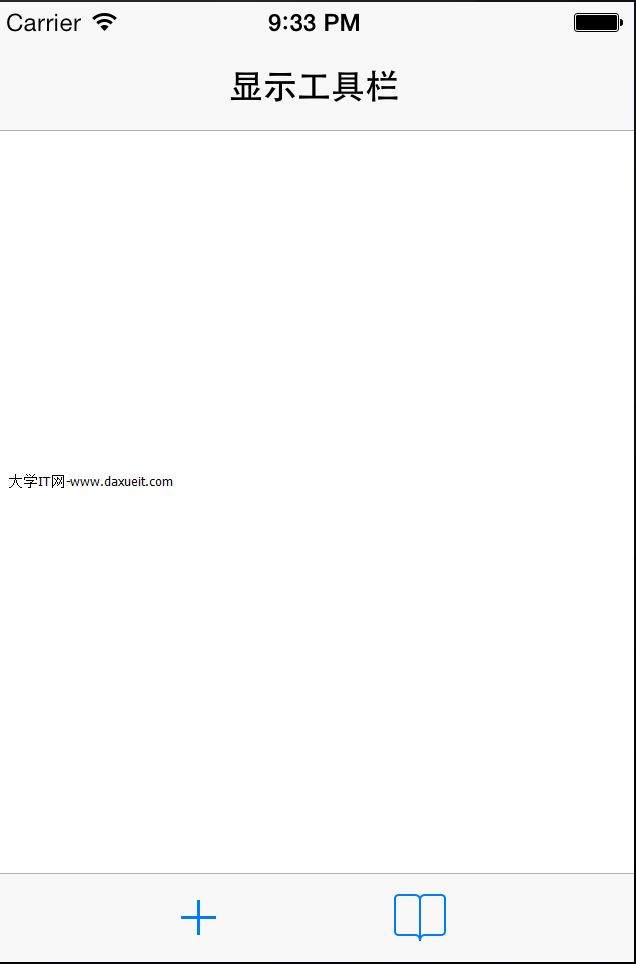MJExtension框架源碼分析
iOS開發中經常會用到數據和模型的互相轉換,大致有兩種轉換方式:1.手動寫轉換的代碼,2.利用開源庫進行轉換。常用的開源庫有:JSONModel、Mantle、MJExtension、YYModel等等,本文主要介紹一下MJExtension的底層實現,看一看小碼哥如何設計這個輕量級的數模轉換框架。
本著面向應用的角度,我覺得還是從一個字典轉模型的例子入手,來詳細介紹一下MJExtension的轉換過程。
待轉換的字典對象:
NSDictionary *dict = @{
@"name": @"kelvin",
@"age": @18,
@"married": @"false",
@"computer": {
@"type": @"AUSU",
@"date": @"2012-01"
},
@"skills": @[
@{
@"type": @"C language"
@"degree": @"proficient"
},
@{
@"type": @"Python language",
@"degree": @"grasp"
}
],
};轉換流程
1.實現轉換的代碼
MJExtension的轉換十分方便,下面一行代碼就可以搞定,當然在轉換之前,要設置字典中數組對應的對象模型,因為在轉換過程中,需要根據模型類來創建模型數組。
// Person.m
+ (NSDictionary*)mj_objectClassInArray
{
return @{@"skills": @"Skill"};
}
// 使用過程的轉換代碼
Person *p = [Person mj_objectWithKeyValues:dict];2.具體的轉換過程
在不考慮CoreData的情況下,我們直接來看轉換的核心代碼的方法,主要就是mj_setKeyValues:context:方法來完成字典轉模型的工作
/**
核心代碼:
*/
- (instancetype)mj_setKeyValues:(id)keyValues context:(NSManagedObjectContext *)context把傳進來的數據轉換為字典
可以看到,傳進來的數據還可以是NSString 和 NSData類型,最後都被轉換為JSON格式的數據
// NSObject+MJKeyValue.m
// 獲得JSON對象
keyValues = [keyValues mj_JSONObject];
--->
if ([self isKindOfClass:[NSString class]]) {
return [NSJSONSerialization JSONObjectWithData:[((NSString *)self) dataUsingEncoding:NSUTF8StringEncoding] options:kNilOptions error:nil];
} else if ([self isKindOfClass:[NSData class]]) {
return [NSJSONSerialization JSONObjectWithData:(NSData *)self options:kNilOptions error:nil];
}
// 返回字典
return self.mj_keyValues;獲取轉換的白名單和黑名單
首先檢查名單是不是存在,如果存在,就直接返回;不存在,則根據方法mj_totalAllowedPropertyNames來獲取名單,然後返回
// NSObject+MJKeyValue.m
Class clazz = [self class];
NSArray *allowedPropertyNames = [clazz mj_totalAllowedPropertyNames];
NSArray *ignoredPropertyNames = [clazz mj_totalIgnoredPropertyNames];
--->
// NSObject+MJClass.m
+ (NSMutableArray *)mj_totalObjectsWithSelector:(SEL)selector key:(const char *)key
{
NSMutableArray *array = [self dictForKey:key][NSStringFromClass(self)];
if (array) return array;
// 創建、存儲
[self dictForKey:key][NSStringFromClass(self)] = array = [NSMutableArray array];
if ([self respondsToSelector:selector]) {
#pragma clang diagnostic push
#pragma clang diagnostic ignored "-Warc-performSelector-leaks"
NSArray *subArray = [self performSelector:selector];
#pragma clang diagnostic pop
if (subArray) {
[array addObjectsFromArray:subArray];
}
}
[self mj_enumerateAllClasses:^(__unsafe_unretained Class c, BOOL *stop) {
NSArray *subArray = objc_getAssociatedObject(c, key);
[array addObjectsFromArray:subArray];
}];
return array;
}根據上述的名單,來判斷屬性是否需要被忽略
// 檢測是否被忽略
if (allowedPropertyNames.count && ![allowedPropertyNames containsObject:property.name]) return;
if ([ignoredPropertyNames containsObject:property.name]) return;遍歷成員變量
+ (void)mj_enumerateProperties:(MJPropertiesEnumeration)enumeration遍歷所有的屬性。屬性會先從緩存cachedProperties中取,如果存在,直接返回;如果不存在,就遍歷類來獲取屬性列表,創建MJProperty對象,並設置它的name(屬性名)、type(數據類型)、srcClass(來源類)等等;同時,還會設置propertyKeysDict(類對應的字典中的所有key) 和 objectClassInArrayDict(類對應的字典數組中的模型類)。
// NSObject+MJProperty.m
// 獲得成員變量
NSArray *cachedProperties = [self properties];
// 遍歷成員變量
BOOL stop = NO;
for (MJProperty *property in cachedProperties) {
enumeration(property, &stop);
if (stop) break;
}
---->
+ (NSMutableArray *)properties
{
NSMutableArray *cachedProperties = [self dictForKey:&MJCachedPropertiesKey][NSStringFromClass(self)];
if (cachedProperties == nil) {
cachedProperties = [NSMutableArray array];
[self mj_enumerateClasses:^(__unsafe_unretained Class c, BOOL *stop) {
// 1.獲得所有的成員變量
unsigned int outCount = 0;
objc_property_t *properties = class_copyPropertyList(c, &outCount);
// 2.遍歷每一個成員變量
for (unsigned int i = 0; i<outCount; i++) {
MJProperty *property = [MJProperty cachedPropertyWithProperty:properties[i]];
NSLog(@"%@ - %@", property.name, property.srcClass);
// 過濾掉Foundation框架類裡面的屬性
if ([MJFoundation isClassFromFoundation:property.srcClass]) continue;
property.srcClass = c;
[property setOriginKey:[self propertyKey:property.name] forClass:self];
[property setObjectClassInArray:[self propertyObjectClassInArray:property.name] forClass:self];
[cachedProperties addObject:property];
}
// 3.釋放內存
free(properties);
}];
[self dictForKey:&MJCachedPropertiesKey][NSStringFromClass(self)] = cachedProperties;
}
return cachedProperties;
} 在上述設置模型屬性時,會調用mj_replacedKeyFromPropertyName查看是否需要替換為新的鍵值。通常,特殊字符如:id、description不能作為對象屬性名,所以如果確實需要該屬性名時,可以用ID、desc等代替,然後就需要實現該方法做替換,使對象的ID屬性名對應字典中的id鍵。
[property setOriginKey:[self propertyKey:property.name] forClass:self];
---->
// NSObject+MJProperty.m
+ (id)propertyKey:(NSString *)propertyName
{
...
// 查看有沒有需要替換的key
if ((!key || [key isEqual:propertyName]) && [self respondsToSelector:@selector(mj_replacedKeyFromPropertyName)]) {
key = [self mj_replacedKeyFromPropertyName][propertyName];
}
...
}取出字典中的屬性值
根據變量名獲取字典中對應的值
// 取出屬性值
id value;
NSArray *propertyKeyses = [property propertyKeysForClass:clazz];
for (NSArray *propertyKeys in propertyKeyses) {
value = keyValues;
for (MJPropertyKey *propertyKey in propertyKeys) {
value = [propertyKey valueInObject:value];
}
if (value) break;
}過濾值
如果用戶需要對取得的字典中的值進行特殊處理,則需要實現mj_newValueFromOldValue:property:方法,並返回對應key的新值。如修改日期格式等等
// NSObject+MJKeyValue.m
// 值的過濾
id newValue = [clazz mj_getNewValueFromObject:self oldValue:value property:property];
if (newValue != value) { // 有過濾後的新值
[property setValue:newValue forObject:self];
return;
}
---->
// NSObject+MJProperty.m
// 如果有實現方法
if ([object respondsToSelector:@selector(mj_newValueFromOldValue:property:)]) {
return [object mj_newValueFromOldValue:oldValue property:property];
}
// 兼容舊版本
if ([self respondsToSelector:@selector(newValueFromOldValue:property:)]) {
return [self performSelector:@selector(newValueFromOldValue:property:) withObject:oldValue withObject:property];
}
// 查看靜態設置
__block id newValue = oldValue;
[self mj_enumerateAllClasses:^(__unsafe_unretained Class c, BOOL *stop) {
MJNewValueFromOldValue block = objc_getAssociatedObject(c, &MJNewValueFromOldValueKey);
if (block) {
newValue = block(object, oldValue, property);
*stop = YES;
}
}];
return newValue; 獲取變量的類型
根據property屬性獲取屬性的類型(基本數據類型則為nil)和數組中的成員對象類型(如果屬性不是數組,則為空對象類型)
// 復雜處理
MJPropertyType *type = property.type;
Class propertyClass = type.typeClass;
Class objectClass = [property objectClassInArrayForClass:[self class]];轉換為可變類型
如果對象的屬性是可變類型,但是從字典中取出的值都是不可變類型,那麼需要把取出的值轉換為可變類型
// 不可變 -> 可變處理
if (propertyClass == [NSMutableArray class] && [value isKindOfClass:[NSArray class]]) {
value = [NSMutableArray arrayWithArray:value];
} else if (propertyClass == [NSMutableDictionary class] && [value isKindOfClass:[NSDictionary class]]) {
value = [NSMutableDictionary dictionaryWithDictionary:value];
} else if (propertyClass == [NSMutableString class] && [value isKindOfClass:[NSString class]]) {
value = [NSMutableString stringWithString:value];
} else if (propertyClass == [NSMutableData class] && [value isKindOfClass:[NSData class]]) {
value = [NSMutableData dataWithData:value];
}模型屬性
這裡用到了是不是Foundation的判斷,如果屬性是自定義屬性,就遞歸調用mj_objectWithKeyValues再次進行賦值
if (!type.isFromFoundation && propertyClass) { // 模型屬性
value = [propertyClass mj_objectWithKeyValues:value context:context];
}數組屬性
如果是NSURL的對象類型,就獲取它的url字符串,然後組合成數組;如果是其它對象類型,就調用mj_objectArrayWithKeyValuesArray::轉換為模型數組
if (objectClass) {
if (objectClass == [NSURL class] && [value isKindOfClass:[NSArray class]]) {
// string array -> url array
NSMutableArray *urlArray = [NSMutableArray array];
for (NSString *string in value) {
if (![string isKindOfClass:[NSString class]]) continue;
[urlArray addObject:string.mj_url];
}
value = urlArray;
} else { // 字典數組-->模型數組
value = [objectClass mj_objectArrayWithKeyValuesArray:value context:context];
}
}處理模型屬性和數組屬性之外的其它屬性
如果屬性的類型和字典中對應的值的類型不匹配,就進行轉換,如:NSNumber -> NSString,NSURL -> NSString,NSString -> NSURL, NSString -> NSURL。另外,針對屬性是布爾類型,而值是字符串:yes/true、no/false(忽略大小寫情況),則轉換為YES、NO的包裝類型。最後,如果屬性和值的類型依然不匹配,那麼就把值設為空,給後面KVC使用
if (propertyClass == [NSString class]) {
if ([value isKindOfClass:[NSNumber class]]) {
// NSNumber -> NSString
value = [value description];
} else if ([value isKindOfClass:[NSURL class]]) {
// NSURL -> NSString
value = [value absoluteString];
}
} else if ([value isKindOfClass:[NSString class]]) {
if (propertyClass == [NSURL class]) {
// NSString -> NSURL
// 字符串轉碼
value = [value mj_url];
} else if (type.isNumberType) {
NSString *oldValue = value;
// NSString -> NSNumber
if (type.typeClass == [NSDecimalNumber class]) {
value = [NSDecimalNumber decimalNumberWithString:oldValue];
} else {
value = [numberFormatter_ numberFromString:oldValue];
}
// 如果是BOOL
if (type.isBoolType) {
// 字符串轉BOOL(字符串沒有charValue方法)
// 系統會調用字符串的charValue轉為BOOL類型
NSString *lower = [oldValue lowercaseString];
if ([lower isEqualToString:@"yes"] || [lower isEqualToString:@"true"]) {
value = @YES;
} else if ([lower isEqualToString:@"no"] || [lower isEqualToString:@"false"]) {
value = @NO;
}
}
}
}
// value和property類型不匹配
if (propertyClass && ![value isKindOfClass:propertyClass]) {
value = nil;
}賦值
利用KVC賦值
[property setValue:value forObject:self];歸檔
MJExtensionCodingImplementation這個宏表明對象支持歸檔,通過分類支持NSCoding協議,實現歸檔和解檔的方法,我們可以直接把對象歸檔和解檔,十分方便
宏定義函數
這個宏可以構建錯誤日志並輸出,方便調試。同時,對於宏替換不是十分了解的時候,可以使用預處理命令,把文件的宏全部替換後,就可以十分方便的看到宏被替換後的代碼模樣:
# clang -E 源文件 [-o 目標文件] // 判斷參數是不是字典
MJExtensionAssertError([keyValues isKindOfClass:[NSDictionary class]], self, [self class], @"keyValues參數不是一個字典");
---->
// MJExtensionConst.h
#define MJExtensionAssertError(condition, returnValue, clazz, msg) \
[clazz setMj_error:nil]; \
if ((condition) == NO) { \
MJExtensionBuildError(clazz, msg); \
return returnValue;\
}MJExtension的分析到此結束,有不足之處,歡迎斧正。
參考資料
MJExtension源碼解析
MJExtension源碼閱讀
跟著MJExtension實現簡單的字典轉模型框架
- jenkins+xcode+蒲公英實現ipa自動化打包
- IOS 開發之UITextField的光標操作擴展
- IOS 開發之Object-C中的對象詳解
- IOS 中UITextField和UITextView中字符串為空和空格的解決辦法
- iOS中只讓textField使用鍵盤通知的實例代碼
- Swift、Objective
- iOSUIView動畫詳解(ObjectiveC)
- 深入理解Objective C的ARC機制
- 第一章:重新認識Objective
- 【iOS】Category VS Extension 原理詳解
- iOS進階(二)Objective
- 隨手關閉 Mac 的顯示器Exposé 的好功能
- Objective-C基礎 自定義對象歸檔詳解及簡單實例
- Objective-C 宏界說具體引見
- Objective-C 代碼與Javascript 代碼互相挪用實例




